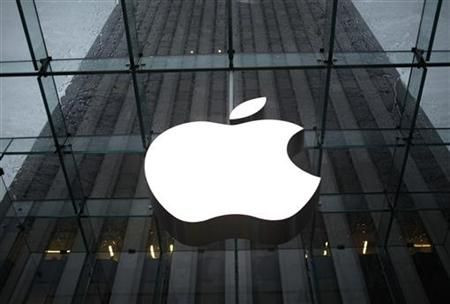Sharp Gaining Share in Apple's Supply Chain for Future Products

Based on channel checks and a recent visit to Japan, Jefferies believes Sharp is taking share in Apple Inc.'s (NASDAQ: AAPL) iPad 3, iPhone 5 LTE, and iTV displays.
We believe Apple has shifted display production and that Sharp has now become a large panel supplier, based on our checks. We believe that the Gen 6 Kameyama facility has been exclusively taken over for Apple purposes with Apple purchasing $500 million to $1 billion of equipment for the manufacturing of iPad 3 and iPhone 5 LTE displays, said Peter Misek, an analyst at Jefferies.
Misek believes production of iPad 3 displays began two weeks ago and is the cause of much of the noise in the supply chain. Also, he believes that Apple and Sharp together have a modified IGZO (indium, gallium, zinc) technology to achieve 330 dpi, which is sufficient for an HD display while not using IPS nor having to include dual-bar LED backlighting.
In Misek's view, this should lead to several design advantages, namely the device can be thinner, battery life should be longer, and the overall experience for users should be meaningfully improved.
He believes Apple may use this facility for the vast majority of the iPad 3 displays. The price at which Apple will be able to procure these panels will be lower than expected as the capital commitment by Apple likely necessitates below-market pricing in his view.
For the iPhone 5 LTE, Misek also believes this new facility will be used to supply displays. The IGZO technology is perfect in that it offers near-OLED power consumption while having a lower cost and thinness that is only 25 percent greater than OLED, based on his checks.
Even after the iPad 3 launch, Misek believes Apple will continue to produce the iPad 2 and will lower the price by $100 to $200. Going forward, he believes that Apple and Sharp will jointly develop OLED panels for use in the iPhone and iPad within the next one to two years. This contrasts with conventional wisdom that states Samsung will have a lock on OLED for that period.
Misek said the equalizer is a new printing technology based on a combination of daisy wheel and inkjet technology that prints the OLED onto a film that is then deposited onto glass.
The yield improvements have been enormous and have enabled some trial runs to produce commercial yields. He expects Sharp/Apple to have a line testing this by the middle of 2012 with 2013 output possible. Based on his checks, he believes OLED is only slated for small and mid-sized panels (i.e., iPad, iPhone). iTV is unlikely to receive OLED treatment until 2015.
For iTV, we believe that Apple will take a line at the Gen 10 Sakai facility and produce a modified version of the Amorphous TFT. We believe retooling of the line has begun or is about to begin at the facility with February as a preliminary time frame for commercial production. This would put an iTV launch as early as the middle of 2012, which aligns with our other iTV checks, said Misek.
Based on Misek's discussions, other TV manufacturers have begun a scrambling search to identify what iTV will be and do. They hope to avoid the fate of other industries and manufacturers who were caught flatfooted by Apple. Having said that, it appears that mainstream TV manufacturers are likely to be at least six to 12 months behind in a best-case scenario.
Misek said many of them lack the software and cloud capabilities as well as the innovative cultural elements to effectively compete. One option could be similar to the Android strategy, but for TVs with OEMs providing the hardware and Google the OS.
We believe Apple has been moving procurement to additional sources. For example, we confirmed that Apple has shifted a small amount of its Flash procurement from Samsung to Toshiba. While this is not overly material for now, we believe it is significant and symbolic as it highlights Apple's future direction, said Misek.
The brokerage raised its first quarter EPS estimate for Apple to $9.85 from $9.79, while lowering its revenue estimate to $38.3 billion from $38.6 billion. The brokerage also raised its 2012 EPS estimate to $35.50 on revenue of $144.9 billion from $33.26 on revenue of $138.4 billion.
The brokerage reiterated its buy rating on shares of Apple with a price target of $500.
Apple stock closed Monday's regular trading down 1.58 percent at $369.01 on the NASDAQ Stock Market while the stock rose 0.25 percent to $369.95 in the after-hours.
© Copyright IBTimes 2024. All rights reserved.




















